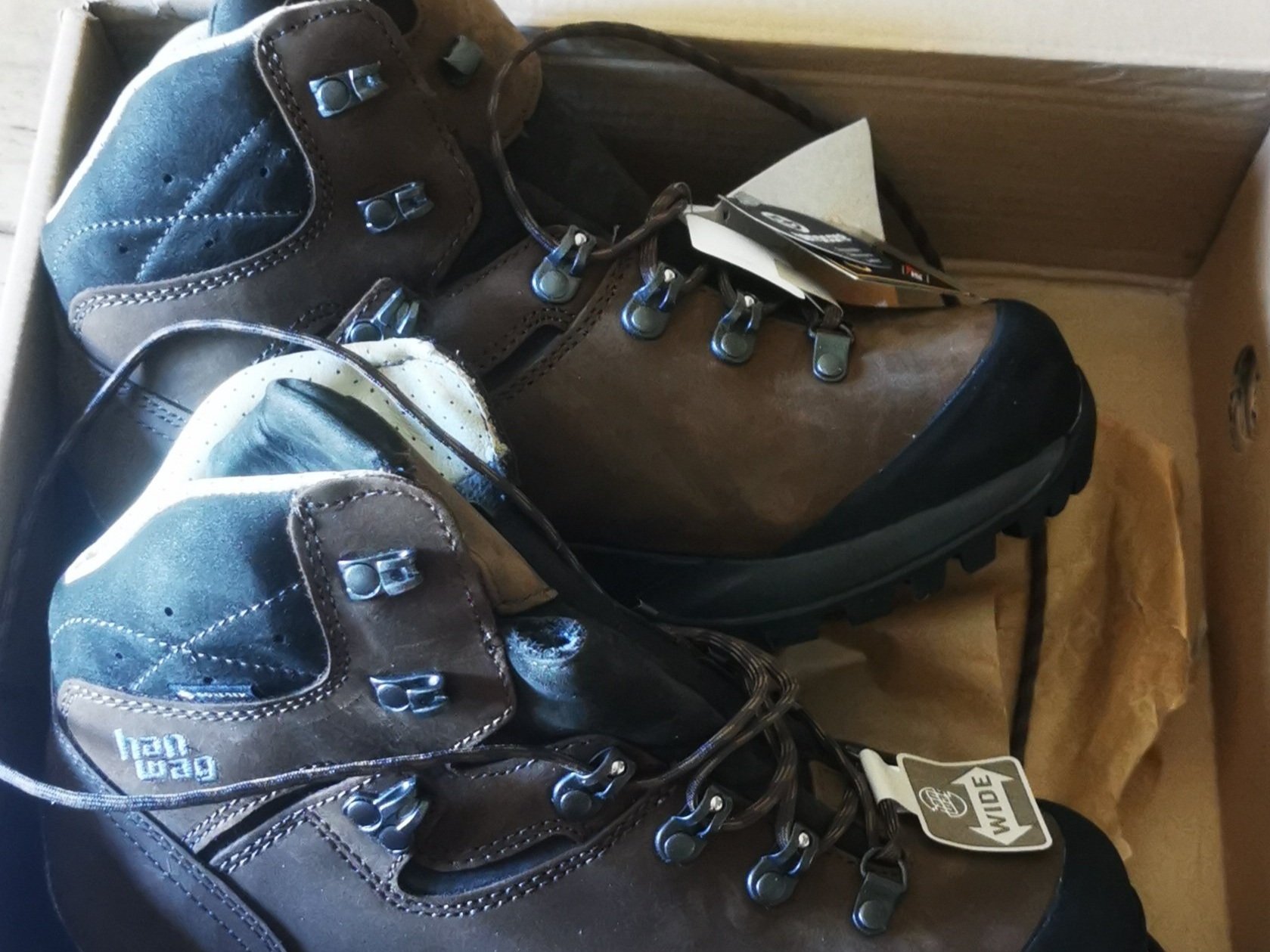Wild Trails Wales Guide: Choosing Hiking Boots
Choosing walking boots can be a minefield, but it’s arguably one of the most important decisions we make as walkers, with so much time on our feet. Boots can be the difference between a bad or a fantastic day out; the right pair can make it easier to avoid blisters, sore toes, aching legs, knee, hip and ankle problems. There is so much choice out there it can be difficult to know where to start; what are the features to look for when buying new hiking boots? Here are some things to consider.
Use
How much and what type of use will your boots have? Do you mostly walk on good trails in dry weather in which case you may be able to benefit from lighter, breathable boots. Or are you often walking on muddy, slippery or rocky terrain? If so you’ll want to look for a sturdier design with good waterproofing. If you walk long distance carrying a heavier pack, you want a combination of lighter, more comfortable boots with good ankle support. If your boots are for frequent use, you may allocate more budget to them, and if you will only use them a few times a year then it may not be worth spending additional money for more features.
Budget
The saying ‘buy cheap, buy twice’ can apply to boots, but that’s not always the case. I’ve had some very expensive boots which have fallen apart or failed in the waterproof department after the first month or two, and I’ve had cheaper boots that have lasted years. How much you can or want to spend is down to personal choice, but it’s worth looking at second hand, shopping around for discounts, and looking in the sales. Previous models are often cheaper when the ‘upgrade’ comes out, but there is rarely much difference. When you’ve narrowed the choice down, read reviews or ask for opinons on outdoor facebook groups or forums.
Height
The jury is still out on wearing boots with ankle support vs trail shoes. Official safety advice usually includes wearing boots with ankle support when hiking, and indeed there have been several times when I have had close calls, narrowly avoiding an ankle snap thanks to my boots. But, boots may be more cumbersome and cause you to walk more clumsily if you’re not used to them. It’s another personal decision, and should be based on your experience and surefootedness (though accidents can happen to even the most surefooted!) How much coverage would you like on your ankle? Sportier, more lightweight boots often don’t offer very much protection around the ankle, but allow you to move faster and be more flexible. For Welsh mountain conditions for much of the year, when carrying a heavy pack, I find ankle support vital, but I personally struggle as I have short legs so high-ankle models come almost halfway up my calf! High boots also irritate my achilles, but that is another story. The point is, the height of ankle support is very much an individual decision.
Weight
Generally, the lighter the better, as your legs will get less tired if you’re carrying less weight on your legs. However, lightweight often means sacrificing protective features such as robust material, waterproofing, good soles and durability. Somewhere in the middle is likely the best option.
Width / Roominess
No pair of feet is created equal. If you think about how for children’s feet you can get shoes in a range of sizes, but suddenly as adults we’re all expected to have the same width feet, it’s no wonder finding boots that fit well is so difficult. This is one of the reasons that physically going to a shop that stocks a range of sizes is so helpful. Certain brands tend to run narrow (in my experience La Sportiva and Scarpa are very narrow) others run wider (such as Keen and Haglofs), and you can also find hiking boots in specifically wide fit (such as Hanwag). Vivobarefoot have a range of feet-shaped boots that are as comfortable as wearing socks, but there are other things to consider when wearing barefoot boots (separate post coming soon). I have a wide forefoot but narrow heel and ankle, so tend to go up half a size where possible, and use other tricks such as adding another layer of insole, or wearing thicker socks.
Soles and tread
Choosing which sole and how much tread you want on your new hiking boots comes down to how you plan to use them again. If you want to be faster and are going to be on dry, well made trails, then a lower profile, springy, curved sole with small lugs is fine. For muddy, slippery terrain you would want bigger lugs and a more solid sole. For wet rock, grippy rubber and a small heel is a good idea. If you need to be edging down steep slopes or scree or even some soft snow, you need as solid a boot as possible - look for ‘mountain boots’.
Reinforcements
Everyone will have their own places where their boots will wear out quickest. For me, because I have wide forefeet and usually need to size up, sometimes the outside of the forefoot on either side goes first as the material tends to bend there and subsequently weakens, eventually cracking. Others can have problems with the toes wearing through. Knowing your own feet will give you the best idea as to what reinforcement to look for. Having a rubber ‘rand’ around the heel and toe offers more protection on rock and will make your boots last longer.
Lacing system
Most good hiking boots will have lacing systems that run all the way to the top of the boot. Some offer lacing down close to the toes, which allow a personalised and more comfortable fit, but may compromise the stability and waterproofing of the boot over time. You may sometimes come across elastic lacing. This can be great for fuss-free lace adjusting and avoiding laces coming undone while you’re out, but by their very nature they are more flexible so offer less sturdy support especially as they become more worn.
Material
Originally all walking boots were made of leather, and the sturdiest and longest lasting boots today are still those made of leather; as long as it is treated well they can last for years! Understandably, some people wish not to use leather which is an animal by-product, and nowadays there are hundreds of synthetic ‘vegan’ options available, which can also be lightweight, though they do have their own drawbacks. For waterproofing, Goretex combined with leather is still the gold standard, though environmentally Goretex isn’t great (read Leave No Trace - What About Our Clothing?). Generally choosing something that lasts longest and avoids needing to buy multiple times is least negatively impactful for the planet.
Guarantee
Reputable brands will offer a guarantee, so if your boots start leaking / falling apart after a small amount of wear you should absolutely get in touch with customer services and ask for a refund or replacement. Check when you’re buying what the guarantee is for your new boots.
Is there anything I’ve missed? Any questions on buying new boots? Pop them in the comments below and I’ll do my best to reply quickly.

